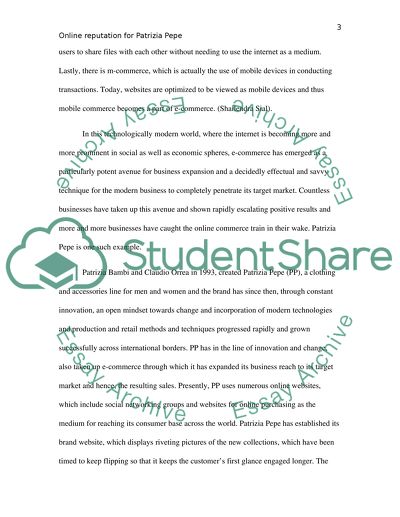Cite this document
(“Online reputation for Patrizia Pepe Essay Example | Topics and Well Written Essays - 3250 words”, n.d.)
Retrieved from https://studentshare.org/e-commerce/1396980-online-reputation-for-patrizia-pepe
Retrieved from https://studentshare.org/e-commerce/1396980-online-reputation-for-patrizia-pepe
(Online Reputation for Patrizia Pepe Essay Example | Topics and Well Written Essays - 3250 Words)
https://studentshare.org/e-commerce/1396980-online-reputation-for-patrizia-pepe.
https://studentshare.org/e-commerce/1396980-online-reputation-for-patrizia-pepe.
“Online Reputation for Patrizia Pepe Essay Example | Topics and Well Written Essays - 3250 Words”, n.d. https://studentshare.org/e-commerce/1396980-online-reputation-for-patrizia-pepe.


